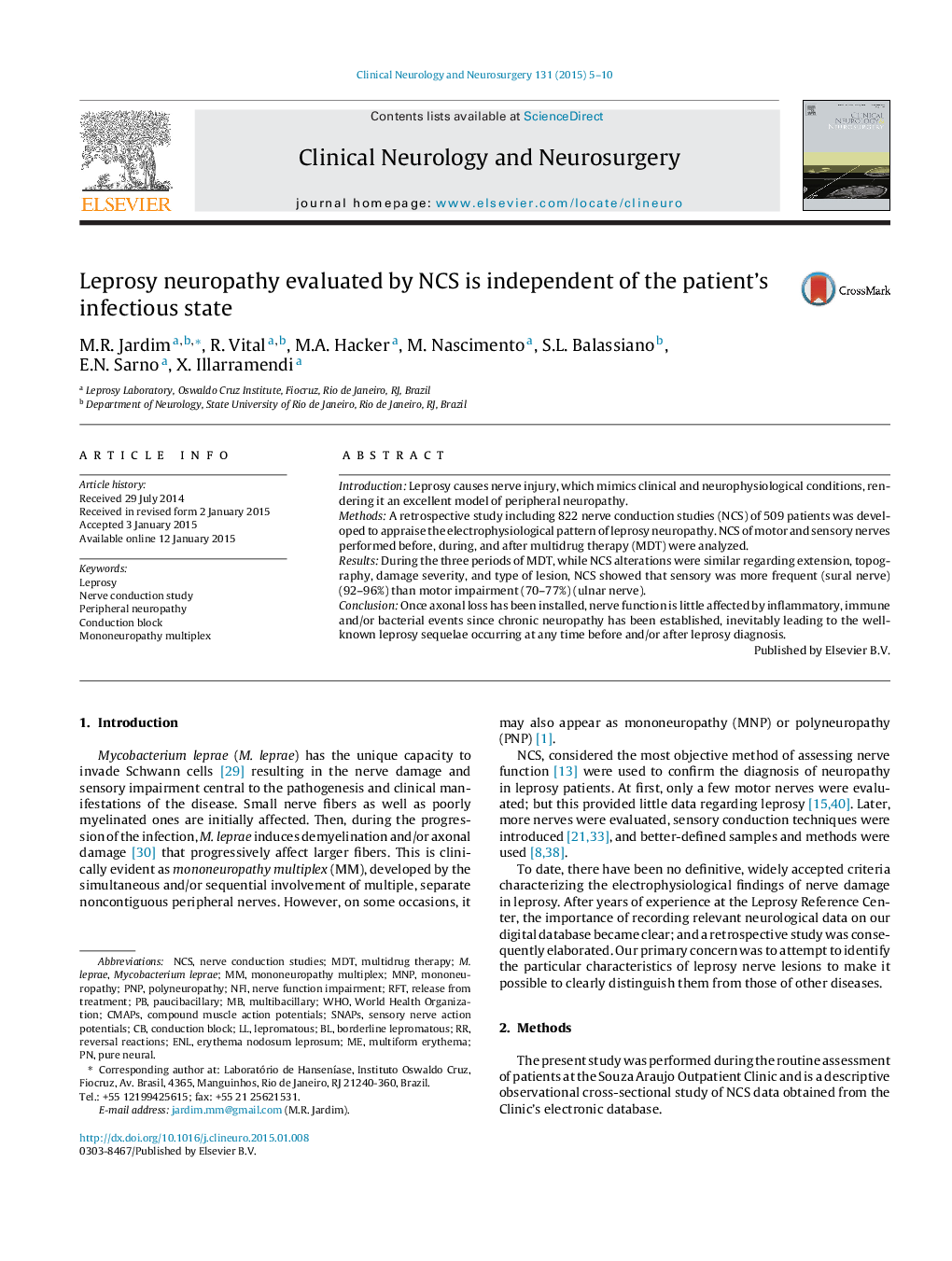| Article ID | Journal | Published Year | Pages | File Type |
|---|---|---|---|---|
| 3039941 | Clinical Neurology and Neurosurgery | 2015 | 6 Pages |
•The presence of acute events of leprosy neuropathy even after a long period of time after RFT.•There is not a typical pattern of nerve lesion in leprosy neuropathy even in the same patient.•The asymmetric neuropathy observed is explained by the variable degrees of nerve involvement.•NCS of motor and sensory nerves performed before, during, and after multidrug therapy (MDT).•At all stages, NCS alterations were similar regarding of the damage and type of lesion.
IntroductionLeprosy causes nerve injury, which mimics clinical and neurophysiological conditions, rendering it an excellent model of peripheral neuropathy.MethodsA retrospective study including 822 nerve conduction studies (NCS) of 509 patients was developed to appraise the electrophysiological pattern of leprosy neuropathy. NCS of motor and sensory nerves performed before, during, and after multidrug therapy (MDT) were analyzed.ResultsDuring the three periods of MDT, while NCS alterations were similar regarding extension, topography, damage severity, and type of lesion, NCS showed that sensory was more frequent (sural nerve) (92–96%) than motor impairment (70–77%) (ulnar nerve).ConclusionOnce axonal loss has been installed, nerve function is little affected by inflammatory, immune and/or bacterial events since chronic neuropathy has been established, inevitably leading to the well-known leprosy sequelae occurring at any time before and/or after leprosy diagnosis.
